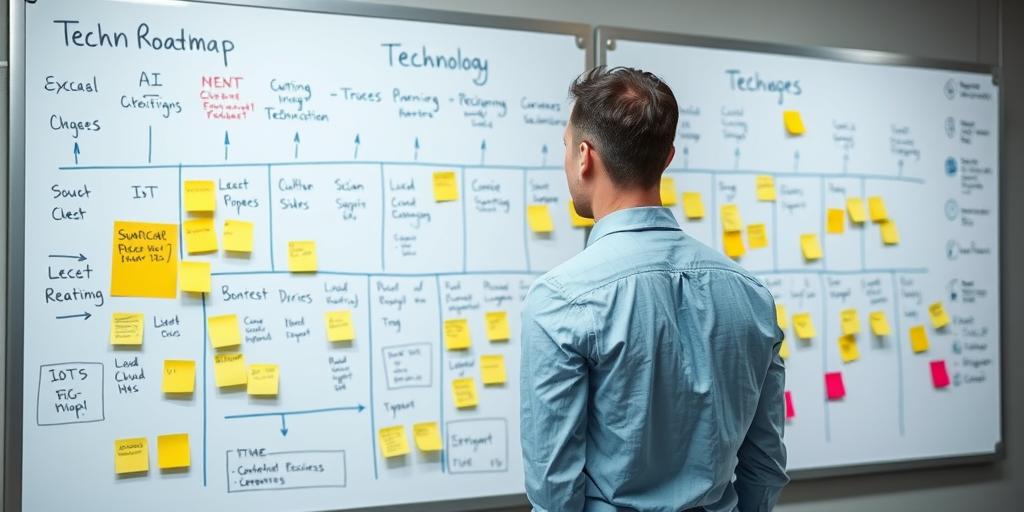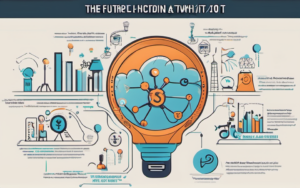In today’s rapidly evolving technological landscape, staying ahead of the curve is crucial for businesses of all sizes. Emerging technologies are constantly reshaping industries, creating new opportunities and challenges. To navigate this dynamic environment effectively, a well-defined roadmap is essential. This roadmap serves as a guide, outlining your strategic approach to implementing these technologies and maximizing their potential.
The Importance of a Roadmap
A roadmap provides a structured framework for integrating emerging technologies into your organization. It’s more than just a list of technologies; it’s a comprehensive plan that considers your business goals, available resources, and the potential impact of each technology. Without a roadmap, you risk haphazardly adopting technologies without a clear understanding of their implications or how they align with your broader strategy.
Benefits of a Technology Roadmap
A well-crafted technology roadmap offers numerous benefits, including:
- Strategic Alignment: Ensures that technology investments are aligned with your business goals, avoiding costly misalignments.
- Prioritization: Helps you focus on the most critical technologies and prioritize their implementation based on their potential impact.
- Resource Optimization: Facilitates efficient allocation of resources, ensuring that you’re investing in the right technologies at the right time.
- Reduced Risk: Mitigates the risks associated with adopting new technologies by providing a structured approach to implementation.
- Improved Communication: Fosters clear communication and collaboration among stakeholders, ensuring everyone is on the same page.
Defining Your Goals and Objectives
Before diving into the details of specific technologies, it’s essential to establish a clear understanding of your overarching goals and objectives. This lays the foundation for a successful technology roadmap.
Identifying Business Needs
Start by identifying your organization’s key business needs. What are the challenges you’re facing? What opportunities are you looking to capitalize on? For example, you might be looking to improve customer experience, streamline operations, or gain a competitive edge.
Setting Clear Objectives
Once you’ve identified your needs, translate them into specific, measurable, achievable, relevant, and time-bound (SMART) objectives. This will provide a clear roadmap for evaluating your progress and ensuring you’re on track to achieve your desired outcomes.
Prioritizing Technologies
With your objectives defined, you can prioritize the technologies that align with your strategic goals. This involves considering the potential impact of each technology, its maturity level, and its alignment with your resources.
Research and Evaluation
Now that you’ve established your goals and prioritized technologies, it’s time to delve deeper into the research and evaluation process. This involves understanding the intricacies of each technology and assessing its potential for your organization.
Understanding Emerging Technologies
Stay abreast of the latest advancements in emerging technologies by researching industry trends, attending conferences, and engaging with experts. This includes understanding the capabilities, limitations, and potential applications of each technology.
Assessing Technology Maturity
Not all emerging technologies are created equal. Some are still in their early stages of development, while others are more mature and ready for widespread adoption. Assess the maturity level of each technology to understand its readiness for implementation in your organization.
Evaluating Potential Impact
Evaluate the potential impact of each technology on your business. How will it contribute to your objectives? What are the potential benefits and risks? Consider factors like cost, implementation time, and the potential for disruption.
Developing the Roadmap
With a thorough understanding of your goals, objectives, and the selected technologies, you’re ready to develop your technology roadmap. This involves defining timelines, allocating resources, and outlining implementation strategies.
Timeline and Milestones
Establish a timeline for implementing each technology, breaking down the process into manageable milestones. This provides a clear roadmap for tracking progress and ensuring timely execution.
Resource Allocation
Allocate resources to each technology based on its priority and potential impact. This may include financial resources, personnel, and other necessary assets.
Implementation Strategies
Develop detailed implementation strategies for each technology. This includes defining the necessary steps, identifying potential challenges, and outlining mitigation strategies.
Communication and Collaboration
Effective communication and collaboration are crucial for a successful technology roadmap. This ensures that all stakeholders are informed, engaged, and aligned with the overall strategy.
Stakeholder Engagement
Engage with key stakeholders throughout the roadmap development process. This includes gathering input from executives, IT personnel, and other relevant departments to ensure buy-in and alignment.
Internal Communication
Establish clear communication channels for sharing updates, progress reports, and any critical information related to the roadmap. This keeps everyone informed and engaged.
External Collaboration
Collaborate with external partners, such as technology providers, consultants, or research institutions, to leverage their expertise and insights.
Monitoring and Adapting
A technology roadmap is not a static document. It’s a living document that should be continuously monitored and adapted to reflect changing business needs, technological advancements, and market dynamics.
Tracking Progress
Regularly track the progress of each technology implementation against the defined milestones. This provides valuable insights into the effectiveness of your roadmap and helps you identify any potential deviations.
Evaluating Results
Evaluate the results of each technology implementation against your initial objectives. This helps you determine the overall success of your roadmap and identify areas for improvement.
Adjusting the Roadmap
Based on your monitoring and evaluation findings, adjust the roadmap as needed. This may involve adding new technologies, modifying timelines, reallocating resources, or adjusting implementation strategies.
The key is to remain agile and responsive to changing circumstances.
Key Takeaways
A well-defined technology roadmap is essential for navigating the dynamic world of emerging technologies. It provides a strategic framework for leveraging these technologies to achieve your business goals, optimize resource allocation, and minimize risk.
Future Considerations
As emerging technologies continue to evolve at an unprecedented pace, it’s crucial to stay informed about the latest advancements and their potential impact on your industry. Regularly review and update your technology roadmap to remain competitive and capitalize on emerging opportunities.




